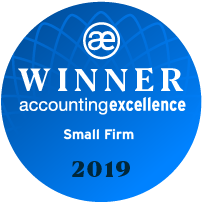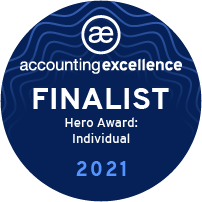Summary
I believe that any organisation that wants to be financially healthy, forward-thinking and an engaging place to work for its employees should promote an ‘always on’ approach to Monetisation review, similar to its continual desire for improvement. This approach should be consistent and actioned at all levels and divisions of an organisation, from shop floor to call centre, from the web team to product team. This is imperative in order to make good annual business plans, as well as to strive to uncover incremental opportunities during the year – it really can make the difference between budget hitting and budget busting.
Monetisation: What?
Monetisation – the conversion of an object into money.
This term is increasingly appearing in business vocabulary and, in my opinion, applies to an object, asset or opportunity that a business has.
It is key in today’s hyper-competitive world, and every business needs to understand their core monetisation streams and execute them well, whilst simultaneously finding new opportunities to capitalise upon. This keeps stagnation at bay, promotes growth and helps to prepare for the inevitable disruption that occurs within an organisation’s business model or competitive set.
Take the following example. If a business is engaged in creating content aimed at a particular audience and hosts that content on a website for people to consume, then a core monetisation stream might well be advertising to that particular market. The content in this case is the business asset, and the monetisation is the advertising. An opportunity may be an event (such as a conference or show) related to the content and audience, whereby ticket sales or referrals may be the opportunity to be monetised in the short term (possibly as a one off, or a semi-regular stream).
Monetisation: How?
I would encourage all businesses to review their core monetisation streams regularly as part of an annual budgeting and review cycle, but also to review opportunities on a more frequent basis (e.g. quarterly). Progress should be reported and the useful lessons learned should be shared with other business areas as and when necessary.
Whether for an annual core review, or perhaps a quarterly opportunity review, I have found the following simple ‘Monetisation Triangle’ exercise useful.
Imagine a triangle with each side labelled with one of the following; Assets, Opportunity and Capability.
- Assets can be anything the business believes is of value, for example brand, IP, data, customers/clients, investors, products etc.
- Opportunity can be anything where there is a potential to service a need. For example a growing trend, a gap in the market, an underserved segment, another company’s crappy execution etc.
- Capability is anything the company (including its people/processes/systems etc.) is good at. For example building websites, marketing, adapting to change quickly, making things etc.
Step 1: Consider these three terms for your own organisation, and write the examples of each outside the triangle, next to each corresponding side. (A bit of group think is always useful at this point!)
Step 2: When you have exhausted the list, try to connect one element from each side together i.e. an asset with an opportunity with a capability (use a numbering system or coloured marker, whatever you like).
Step 3: Debate the merits and strengths of each connection, with a view to having at least 2 and ideally no more than 5 connections inside the triangle.
Depending on whether this is a more annual review, or shorter quarterly review, these now form the basis of your core monetisation streams to centre your business plans around for the next period.
If growth is the goal in mind, two strong recommendations are as follows. Firstly, use the 80/20 ratio in terms of resource for the core business vs. the resource to monetise opportunities. Secondly, incorporate monetisation into the existing rhythms of a new business as a new element, rather than a new activity, for which bespoke resource and activity needs to be allocated. This will require some initial thinking time, but it is well worth it in the end.
Other tips include are as follows: use small teams, think ‘growth hacking’, gain permission to incorporate the process, report results, go cross-functional, go MVP (google lean startup/Eric Ries), take an entrepreneurial outlook, fail fast (and learn from it quickly too).
Monetisation: Who?
Monetisation is one of those areas where almost all the traditional parts of an organisation could stake a claim, especially entrepreneurial CEOs who like to roll those ideas out sometimes without too much further thought on impact, execution or understanding by the wider organisation. So, how do you build this thought process into the grass roots of an organisation?
Finance would say it is the annual plan or the business model etc., whereas Sales and Marketing would say they should do the demand driving and selling. Product teams would say they are best suited to uncovering new customers and revenue, whilst Customer Service teams would say they talk to the customers all day, so they are the ones to uncover new opportunities.
Of course, all those divisions have a viable stake and contribution to make. Every team and individual can make a contribution but usually it will require some collaboration across individuals and teams to test and learn things fully. Usually I have found a commercial person or directorate is good at co-ordinating business areas and plans, but this is not always the case. Sponsorship and co-ordination by a member(s) of the senior management team also helps.
All teams can undertake the exercise but most groups are likely to need some element of cross collaboration in order to execute either the 80 or the 20 as part of the normal course of business.
A top tip is to democratise the process as much as possible down to teams. This lets the full potential of the exercise to be met by driving the highest level of engagement in it. It is often those you least expect in the organisation who are sitting on the asset or can see the opportunity. The data analyst, the direct marketer, the sales executive can be a hidden source of opportunity if given a platform from which to contribute. I can’t tell you the number of times I have had a conversation with a shop manager about customers always asking for X, or a data manager who reveals there are tens of thousands of people that bought Y and might be interested in Z, if only we had it. It is often difficult to connect the dots and certainly impossible for one person or department to do it, so democratise it and reap the benefits.
Another top tip is to gamify it a bit, track progress and wins, adopt innovation accounting, identify champions and the entrepreneurial/disruption minded, empower the masses and celebrate the fast fails as well as the successes.
Can you make a difference to your organisation and be a growth champion by adopting such an approach?





